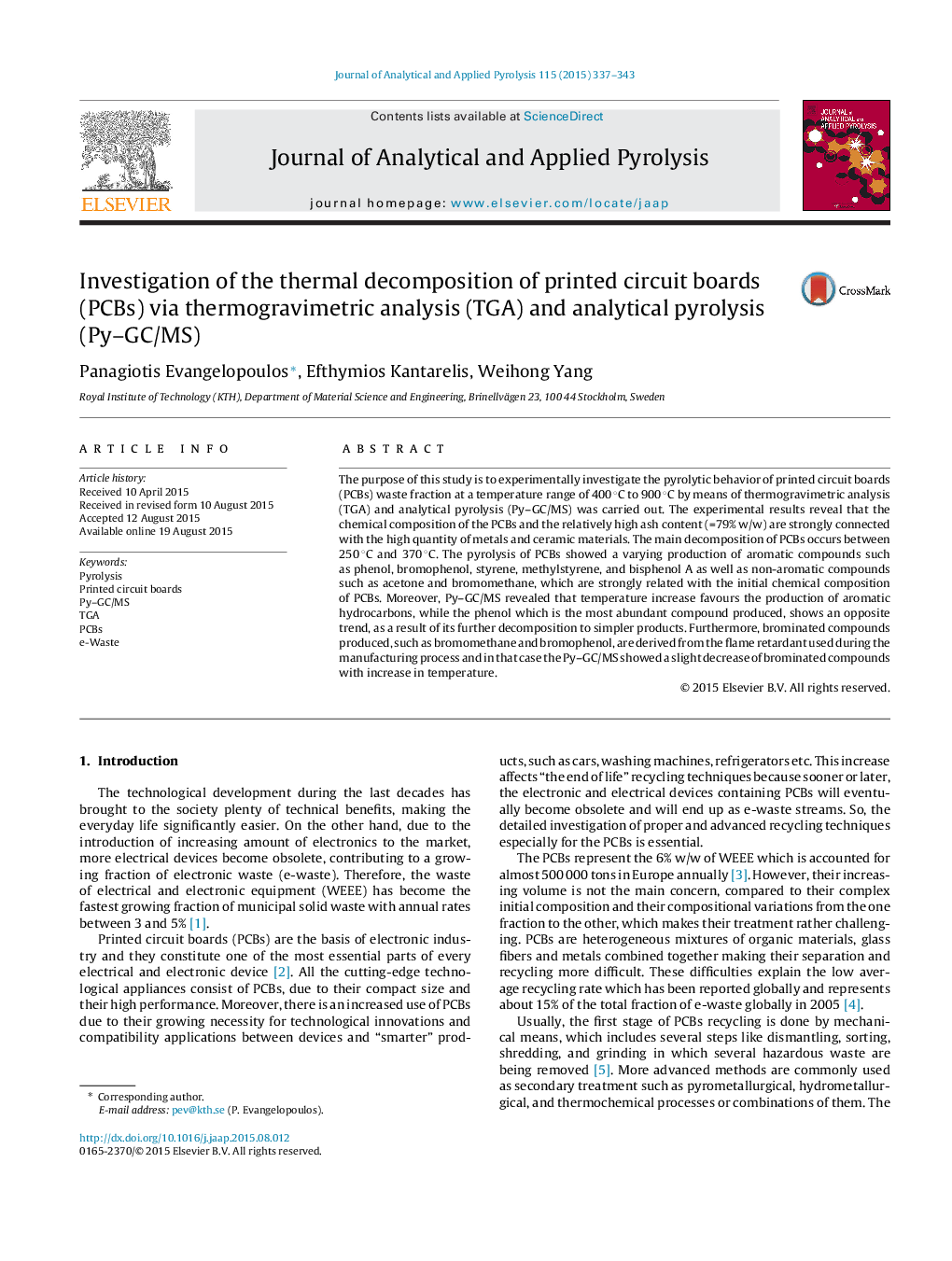| کد مقاله | کد نشریه | سال انتشار | مقاله انگلیسی | نسخه تمام متن |
|---|---|---|---|---|
| 1197108 | 1492962 | 2015 | 7 صفحه PDF | دانلود رایگان |

• Identification of two degradation steps of printed circuit boards (PCBs) via TGA experiments.
• Identification of several pyrolysis products, which the most abundant was phenol and phenolic compounds.
• Correlation of the product yields according to the temperature conditions.
• Possible reaction pathways of the degradation of brominated epoxy resin was proposed.
• Production of benzofuranic structures at higher temperatures remains a significant challenge.
The purpose of this study is to experimentally investigate the pyrolytic behavior of printed circuit boards (PCBs) waste fraction at a temperature range of 400 °C to 900 °C by means of thermogravimetric analysis (TGA) and analytical pyrolysis (Py–GC/MS) was carried out. The experimental results reveal that the chemical composition of the PCBs and the relatively high ash content (=79% w/w) are strongly connected with the high quantity of metals and ceramic materials. The main decomposition of PCBs occurs between 250 °C and 370 °C. The pyrolysis of PCBs showed a varying production of aromatic compounds such as phenol, bromophenol, styrene, methylstyrene, and bisphenol A as well as non-aromatic compounds such as acetone and bromomethane, which are strongly related with the initial chemical composition of PCBs. Moreover, Py–GC/MS revealed that temperature increase favours the production of aromatic hydrocarbons, while the phenol which is the most abundant compound produced, shows an opposite trend, as a result of its further decomposition to simpler products. Furthermore, brominated compounds produced, such as bromomethane and bromophenol, are derived from the flame retardant used during the manufacturing process and in that case the Py–GC/MS showed a slight decrease of brominated compounds with increase in temperature.
Journal: Journal of Analytical and Applied Pyrolysis - Volume 115, September 2015, Pages 337–343